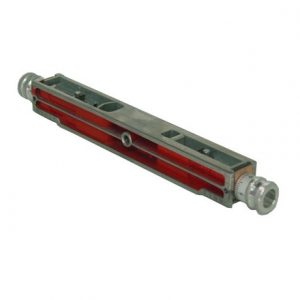
By The Gun Psychiatrist
Recently, I had to interview a friend mine for a school assignment regarding basic ballistics. At the request of my good friend, he prefers I use a pseudo name for this article, so we’ll just call him John. John is from Colorado and is into guns, ranching and machining. I conducted the interview over the phone, transcribing the conversation as the call progressed. For the first part of the article, I will conduct in the format of the call, using names in lieu of quotes.
Kevin: Hey buddy, thanks for taking my call and it’s good to talk to you again! As I mentioned in my text, I recently went back to school and need to interview someone for an assignment regarding basic ballistics.
John: Well glad to hear you are back at it buddy, I’d be obliged to help in any way!
Kevin: Great! Let’s get started shall we? Could you explain trajectory as it pertains to ballistics?
John: Sure, as far as I know, trajectory is the path the bullet takes when fired. I know each caliber has a different trajectory.
Kevin: What about wind drift?
John: Well I ain’t ever really had to deal with wind drift, but basically the wind can blow your bullet off the target and ya might miss if you ain’t careful. Most the time I shoot, it’s at less than 250 yards, so the wind ain’t really been a problem for me.
Kevin: Yep, I am not much of one to shoot on a windy day either. So what can you tell me about recoil?
John: It hurts! I just got a new 12 ga slug gun and been shootin’ these slug rounds I bought before Jensen’s went under. Damn thing kicks worse than a mule, left a bruise on my shoulder for about a week. I’m gettin’ too damn old for this crap.
Kevin: That’s funny, and old age is no excuse to give up on shooting! But, on a serious note what can you tell me about it?
John: Well, as you know, I usually pack my .300 Win Mag when I go up elk huntin’ and when I first bought it, the damn thing almost knocked my shoulder out of socket when I was sightin’ her in. It was so bad I named the damn thing after my first ex-wife, that woman was a real kick in the ass.
Kevin: (Laughing)
John: But, I guess that feeling just stuck when it came time to drop the first elk of the season.
Kevin: What, from the recoil or the ex?
John: Both! (laughing) But to be honest, I missed the elk on the first shot, I ain’t really one to admit this, but that recoil from sightin’ it in stuck with me. I was waitin’ for that damn kick and flinched I guess. I got the elk on the second go round. After that I threaded the barrel and put a brake on it which really helped.
Kevin: What can you tell me about velocity?
John: I’m pretty sure it’s how fast the round is flyin’ out the gun.
Kevin: How about accuracy?
John: Well I always say a gun’s only as accurate as the person shootin’ it. You also gotta buy good stuff for it too. I wonder who was complaining years ago about all the cheap Chinese junk floodin’ the gun market, flippin’ me 9 kinds of hell about my scopes?
Kevin: (Laugh)
John: You were right though, I started buying better quality stuff and I ain’t really had the issues I used to with my accuracy. I finally put them Vipers on my .270 and .300 Win Mag and let me tell you, I ain’t had no issues. I can pick a tick off an elk with the damn things if I wanted to, the sight picture is like an HDTV too.
Kevin: So what did you think about the pictures of the gunning calculations I sent you?
John: To be honest with you, I ain’t ever heard of em’. But after looking at em’ I guess there kinda interesting. I don’t reckon I’d ever have a use for em’, they look like something an ammo manufacturer would use, but hey, you never know.
Kevin: Well thanks for your time buddy, I will catch up with you later.
John: Glad I could help, don’t be a stranger and good luck on the paper. Let me know how ya do! Talk to you later.
Upon evaluation of my interview with my long time friend, I read chapter one of this week’s assigned reading material. Though he has a humorous way of putting things, it is fair to note that he is not far off in some of the things he said. SDI’s book on Basic Ballistics however, went into much more detail with regard to the concepts of trajectory, wind drift, recoil, velocity and accuracy.
Trajectory is defined just as it sounds, the flight path of an object. Though not mentioned by my friend it is fair to note that Newton’s third law of motion is applicable and that part of the trajectory of a bullet, is the pattern and curved path it takes while in flight. This is due to the two main forces interacting with the bullet: air resistance and gravity.
A good majority of shooters are just like my friend, we never really consider wind drift as a potential force that will affect accuracy. This is due to the distance most shooters either hunt or target practice at. For the long range shooter, wind drift can quickly become a problem for accuracy. Reading the wind takes much practice as wind never travels in a straight line and can vary at certain distances within the flight path of the bullet.
As highlighted in the interview, recoil has the potential to hurt and even bruise. All shooters have experienced recoil, but most of us will explain the feeling as it pertains pain vs. the more scientific answer. Recoil has little effect on accuracy as it occurs the moment the bullet travels down the barrel.
The issue described in the interview pertains to flinching, and the central nervous system’s ability to remember painful experiences. This memory or anticipation is noticed right before trigger break and the body tenses up, throwing off the shooters intended trajectory. If not corrected this can quickly develop into a muscle memory for some shooters.
Velocity, as stated, is how fast the bullet is moving out of the gun. More accurately, velocity is the forward speed of a bullet measured in feet per second. Most shooters will usually be informed about velocity as it pertains to exterior ballistics. Velocity has a simultaneous effect on trajectory which can affect accuracy and ballistic performance at longer ranges. For example, the higher the velocity of a bullet the flatter its trajectory, effecting ballistics drop at longer ranges.
Perhaps the most discussed word within the firearm community is accuracy. Even my buddy had it right, because a firearm is a tool. If you invest in quality tools you will get the best performance from them. Though chapter one of Basic Ballistics did not mention quality of arms and accessories, it did mention the measure of accuracy. MOA or Minute of Angle is the most common measurement of shooters and is 1.047” per 100 yards.
MOA is fairly easy to use compared to its more precision counterpart, MILRAD or Milliradian, another common measurement among shooters. These two forms of measurements are used for various tasks in scopes such as rangefinding, measuring targets, etc. Grouping is also another consideration when discussing accuracy, as a group measurement will allow the shooter to classify their rifle’s accuracy. Groups are measured by the distance in the centers of two shots furthest apart on a target.


